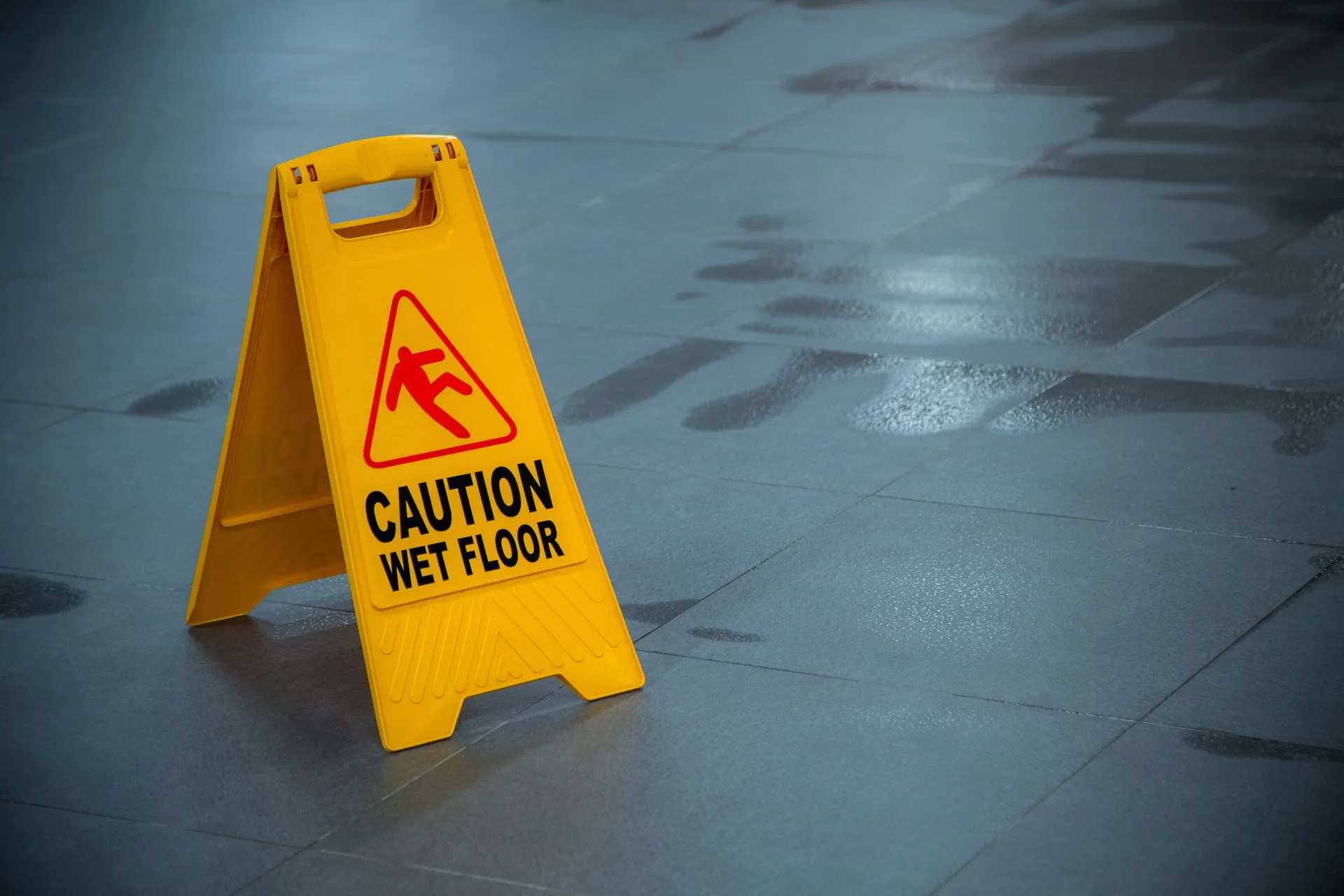
A slip and fall accident can happen almost anywhere, including your own home. Legal problems begin when you slip and fall on someone else’s property (such as at a grocery store, amusement park or someone else’s private residence) and suffer injuries. If the property owner, management or staff members failed to ensure the property is safe for permitted occupants, they may be held liable for your injuries and damages.
However, proving your slip and fall case must be substantiated with concrete and compelling evidence. There are also a handful of important exceptions that can complicate your case. It may be necessary to:
- Have documentation proving you were at the property when you claim the injury occurred
- Establish the property owner reasonably should have been aware of the hazard and had time to fix it prior to your injury
- Prove you were being reasonably conscious of your surroundings
If you believe you have a valid slip and fall case but you’re not sure where to begin the process of filing a claim, consulting with a personal injury lawyer experienced with handling slip and fall cases may be a good idea.
Proving Your Claim
In an Ohio slip and fall case, you generally need to establish four key elements to prove your claim. These elements are:
Duty of care: You must demonstrate the property owner or occupier owed you a duty of care. This means that they had a legal obligation to maintain their property in a reasonably safe condition or warn visitors of any known hazards.
Breach of duty: You must show that the property owner or occupier breached their duty of care. This typically involves proving they failed to take reasonable steps to prevent or address the hazardous condition that caused your slip and fall.
Causation: You must establish a causal connection between the property owner’s breach of duty and your slip and fall accident and injuries. In other words, you need to demonstrate that the hazardous condition directly caused your injuries.
Damages: Finally, you must provide evidence of the damages you suffered as a result of the slip and fall incident. This can include medical expenses, lost wages, pain and suffering and any other losses or harm you experienced due to the accident.
Slip and Fall Case Scenario #1
Let’s consider a scenario where you visit a grocery store and slip and fall on a recently mopped floor without any warning signs or barriers. You suffer a fractured wrist as a result of the fall.
The grocery store’s failure to place warning signs or barriers after mopping the floor can be seen as negligence. They didn’t take proper precautions to prevent accidents or inform customers about the potential hazard.
This lack of warning signs caused you to accidentally slip and fall and suffer an injury. Your medical records and bills can provide evidence of the extent of your injury and the associated expenses.
In this particular example, the validity of the slip and fall case lies in establishing
- You were there (having witnesses who can corroborate your version of events can be extremely beneficial – this is also why it’s vital to report slip and falls immediately)
- The grocery store breached its duty of care by not putting up wet floor signs, resulting in hazardous conditions and your subsequent injury
- You have medical bills, past pay stubs and proof that you missed work due to your injuries
By demonstrating negligence and connecting it to the harm suffered, you would have a strong case for seeking compensation from the grocery store for your medical expenses, pain and suffering and other applicable damages.
Slip and Fall Case Scenario #2
Let’s consider another scenario where you visit a shopping mall and claim you slipped and fell in one of the common areas, resulting in a sprained ankle.
To have a valid slip and fall case, it is necessary to establish that the property owner or occupier was negligent in maintaining the premises. In this case, if the mall had taken reasonable measures to ensure the safety of their common areas, such as regular inspections, prompt cleanup of spills and appropriate maintenance, it would be difficult to prove negligence.
Moreover, if you were distracted by your phone or not paying attention to where you were walking, and there’s no documented evidence of existing hazardous conditions, it could be challenging to prove that the mall was primarily responsible for your injury.
In this example, it may be difficult to prove negligence on the part of the mall.
Discuss Your Ohio Slip and Fall Case with a Slip and Fall Attorney
If you’ve suffered injuries in a slip and fall accident on someone else’s property, contact the Buckeye Law Group today.
We’ll take the time to thoroughly examine the circumstances surrounding your case and help you understand the factors that may influence the value and outcome of your personal injury claim.
Our skilled and accomplished personal injury attorneys have a deep understanding of premises liability laws and are here to offer expert legal guidance and representation.
To discuss your case for free, call 1-800-411-PAIN.
Heart Disease Misdiagnosis: When Doctors Fail to Act
The Silent Killer That Doctors Overlook Heart disease remains the leading cause of death in the United States, and early detection is often the key to survival. Yet, thousands of
Cardiology Errors That Lead to Catastrophic Consequences
When the Heart Is Mishandled: The Hidden Dangers of Cardiology Negligence Cardiology is one of the most critical areas of medicine—where every second and every decision can mean the difference
The Link Between Oxygen Deprivation and Medical Negligence
Understanding Oxygen Deprivation and Its Consequences Oxygen deprivation—also known as hypoxia or anoxia—occurs when the brain or other vital organs do not receive enough oxygen to function properly. In medical
Filing a Brain Injury Lawsuit Against an Ohio Hospital
When a Medical Error Leads to Brain Damage Brain injuries caused by hospital negligence are among the most serious and heartbreaking medical malpractice cases. Unlike accidents outside a medical setting,
Slip and Fall Injuries on a Moving Bus—Can You File a Claim?
Understanding Slip and Fall Injuries on Buses Public buses, school buses, and private shuttles are all considered “common carriers,” which means they owe passengers a heightened duty of care. Yet
How to File a Claim for a Child Injured in a Bus Accident
When a Child Is Hurt on a Bus Parents trust buses—school buses, daycare vans, and public transit—to safely transport their children. But when a child is injured in a bus
Why Motorcycle Accidents Often Lead to Severe Injuries
The Unique Dangers of Motorcycle Crashes Motorcycles offer freedom and mobility on Ohio’s roads, but they also expose riders to a much higher risk of catastrophic injuries compared to occupants
Can You Sue If You Weren’t Wearing a Helmet?
Helmet Laws in Ohio Ohio law requires only riders under the age of 18 and those with a “novice” license to wear a helmet. Adult riders are generally not legally
Suing for Brain Injury or Death Caused by Anesthesia Errors
When the Stakes Are Life and Death Anesthesia errors don’t just cause awareness—they can also lead to catastrophic outcomes such as permanent brain damage or wrongful death. Because anesthesia directly
Waking Up Too Soon: When Anesthesia Goes Wrong
The Hidden Dangers of Anesthesia Anesthesia is one of modern medicine’s most important tools, allowing patients to undergo surgery without pain or memory of the procedure. However, anesthesia is also
